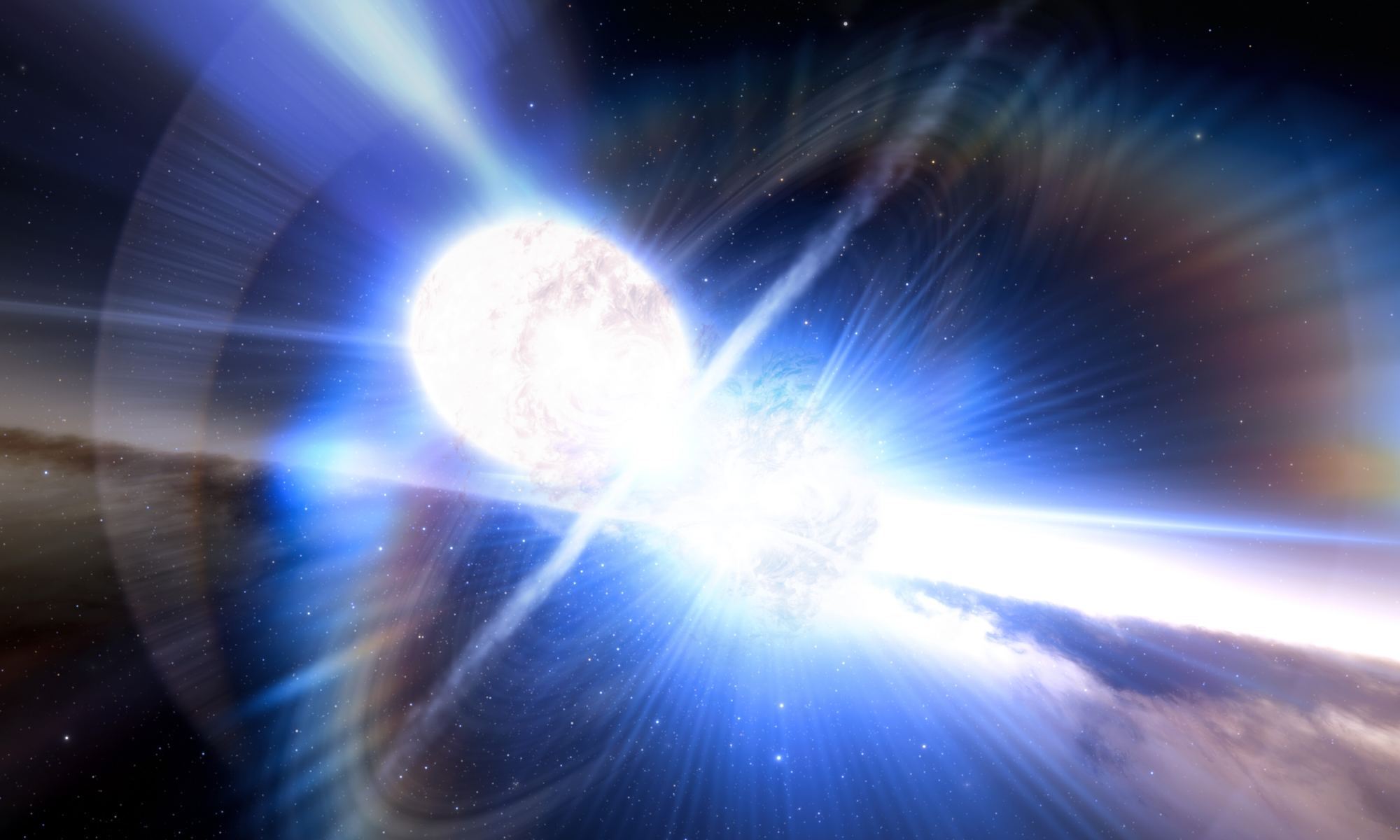Cataclysmic events happen in the Universe all the time. Black hole mergers, supernovae, gamma-ray bursts, and a whole host of others. Most of them happen in distant galaxies, so they pose no threat to us. But there are a few that could affect life on Earth, and a couple could even pose an existential threat. One of these threats is known as a kilonova.
The threat generally comes from high-energy particles. Earth has a good atmosphere and a reasonably strong magnetic field, so we’re well protected from most solar flares and stray cosmic rays. We’re less protected by a truly powerful beam of gamma rays or X-rays that could ionize our atmosphere and kill life on Earth. The most popular idea is that a nearby supernova could kill us all, but the nearest large star that might explode any time soon is Betelguese. It’s just 650 light years away, but when it becomes a supernova it won’t harm Earth, it will just become a star nearly as bright as the Moon.
A more recent idea is that a kilonova might get us. These are triggered by the merger of two neutron stars and can generate a tremendous amount of high-energy particles. They aren’t as bright as a supernova, but they can be a thousand times brighter than a nova. From the polar regions come beams of X-rays, and from the equatorial region comes the kilonova blast itself, which can accelerate particles to become cosmic rays. If Earth happens to be close to a kilonova, it would be very, very bad news for all of us. Fortunately, a recent study shows the kilonova risk is tiny.

The study is based on a neutron star merger observed in 2017. It was detected optically as a gamma-ray burst (GRB) and gravitationally as a compact object merger. This means we have good data on the masses and distances of the original neutron stars as well as the amount of energy they produced. The team then supplemented this data with theoretical simulations.
There are three main threats from a kilonova explosion. The first is the X-ray emission from the afterglow of the event, which generally emanates from the polar region. Given the decrease in light intensity with distance, the team calculated it would pose a threat to a range of 5 parsecs, or about 16 light-years. The second threat is from the gamma rays produced by the explosion itself. Since gamma rays tend to scatter strongly off interstellar particles, they only pose a threat to 4 parsecs or 13 light-years.
The third threat is more subtle. The first two would reach us at the speed of light, and if we were outside their threat radius we would see them only as an amazing light show. But the shock wave of the kilonova would create an expanding shell of high-energy cosmic rays. These could reach us a thousand years or more after the initial X-rays and gamma-rays. When the team calculated the lethal range of cosmic rays, they found it was nearly 36 light-years. So a nearby cosmic light show from a kilonova could be a warning of our imminent demise.
But there’s no real need to worry. Given the rarity of neutron star mergers in the galaxy, the chance of Earth being close to a kilonova is essentially zero. A much greater risk comes from the solar flares of our own Sun, which mostly poses a technological risk, not an existential one. So we can sleep easy knowing that a neutron star merger isn’t likely to cause us any harm.
Reference: Haille M. L. Perkins, et al. “Could a Kilonova Kill: a Threat Assessment.” arXiv preprint arXiv:2310.11627 (2023).

